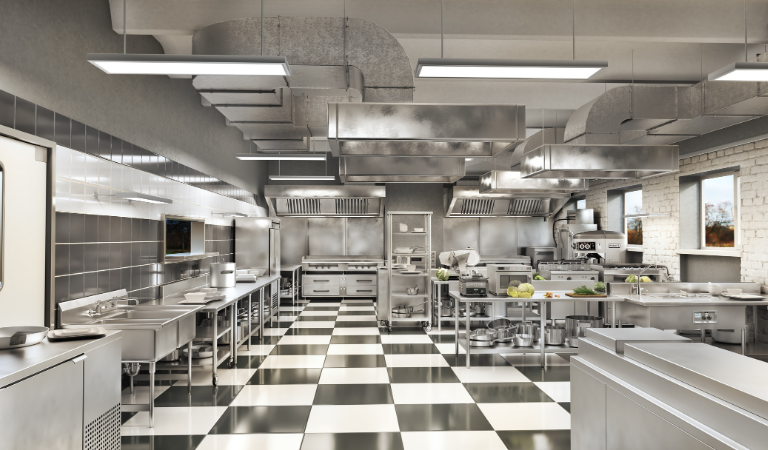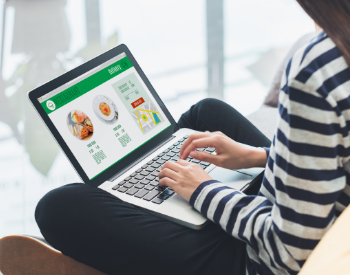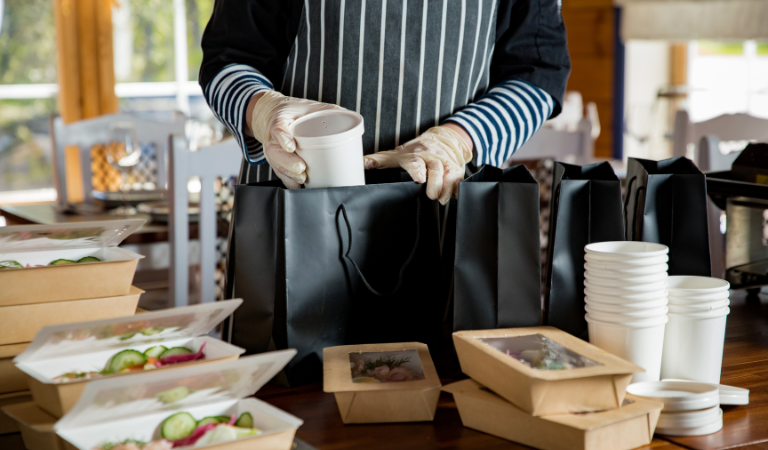Opening a restaurant can be stressful and costly. There is an endless
amount of paperwork and according to statistics, you will most likely go
over budget. This is why many aspiring restaurateurs are now turning
towards ghost kitchen restaurants. Also known as virtual restaurants,
these types of restaurants are more appealing thanks to their lower
overhead cost and relatively simple start-up process. But if you’re an
owner that thrives on face-to-face customer interaction, then this might
not be the type of restaurant for you. If you’ve decided that ghost
kitchens are the perfect business model for you, find out exactly how to
open a ghost kitchen with our helpful checklist.
How To Start A Ghost Kitchen Checklist
Rent A Commissary Kitchen Or Space
Like their name entails, ghost kitchens only utilize a kitchen area and devoid themselves from dining or waiting areas. When looking for real estate to set up your business, you can choose from two options:
- Commissary kitchens: These spaces are licensed foodservice kitchens that are completely equipped with everything a brick-and-mortar restaurant kitchen would have. They are available for rent and are typically priced lower than what you would pay for a lease in a commercial building. You can also choose to share a commissary kitchen with another virtual restaurant to lower rent even further.
- Low rent commercial spaces: When it comes to location, restaurant operators know that high-traffic areas are the ideal spot for opening up a foodservice establishment. Because ghost kitchens don’t rely on foot traffic, you can choose to operate from a low rent commercial space. Just make sure your ghost kitchen is located in an area that can be easily located by customers and delivery services.
If you already own a restaurant, you can attach a pop-up ghost kitchen to your pre-existing business. A pop-up ghost kitchen can be used as a space that’s dedicated to only fulfilling online orders.
Create A Concept
When creating a concept, think about the type of food you would like to make and the type of food your target customers would like to eat. For example, if you want to be vegan-friendly and serve millennials and gen-z’s, you might want to offer vegetarian fusion cuisine (a popular food trend among these generations). Base your food items off your concept and add it to your menu. One of the great things about ghost kitchens is that if one concept doesn’t work, you can easily switch over to another at a small cost. Brick-and-mortar restaurant operators can also use ghost kitchens to test new concepts.
Establish An Online Presence
Build an online website and create social media accounts for your business. By establishing an online presence, customers will have an easier time finding your ghost kitchen. Not to mention, this is one of the best and cheapest ways to market your business. Post your restaurant menu and include details about each menu item in order to entice customers. As for your social media accounts, it’s important to post regularly with engaging content to garner interest from potential customers. Remember to always include your business’ contact information and service hours so customers can contact you if they have any questions.
Staff Your Ghost Kitchen
Because ghost kitchens don’t need front-of-house staff, you will mostly have cooks on your payroll. Determine how many and what type of employees to hire based on your budget and establishment’s needs.
To keep employees safe, implement social distancing guidelines, mandate personal hygiene practices, and constantly sanitize high-contact surfaces. Luckily, virtual kitchens don’t offer dine-in services which means you and your staff will have reduced contact with customers.
Create A Delivery System Or Team Up With A Food Delivery App
When it comes to delivering your meals, you can choose to use a third-party food delivery app, set up your own delivery system on your website, or both. Here are some pros and cons of both of these systems.
- Third-party delivery apps: While food delivery companies make it easy for customers to find you, all third-party apps charge a commission rate that might end up hurting your business.
- Website delivery system: In order to process orders, you can use a website builder or implement a point of sale system (POS) in your website. If you choose to use a POS system, keep in mind that you’ll have to make monthly payments.
Provide Excellent Packaging
Since virtual kitchens only offer delivery and take out, your packaging style is an essential part of your business. Customers will not want to order from a restaurant that pays little to no attention to their packaging. Here are some tips to help you provide excellent packaging:
- Attach your logo or brand name to your packaging to make your business memorable to customers.
- Use tamperproof or tamper-evident packaging to keep prying hands away from customers’ orders.
- Choose the appropriate packaging materials for the type of food you are delivering. For instance, research materials that will keep hot foods hot, cold foods cold, and greasy foods from seeping oils.
-
Engineer packaging to keep food intact. For example,
you might want to pack sauces separately to keep food from getting
soggy if traveling long distances.

How Much Does A Ghost Kitchen Cost?
There is no fixed price for a ghost kitchen, as the cost will largely depend on whether you will be using a commissary kitchen or renting a commercial space. When compared to brick-and-mortar restaurants, however, ghost kitchens have less overhead costs and will allow you to avoid expensive rent costs.
On average, a brick-and-mortar restaurant will cost around $100 to $800 per square foot. This price does not include the cost of equipment such as dining chairs, tables, or menus. Because ghost kitchens don’t need this type of equipment and only use a kitchen, you will be saving significantly more.
What Is A Ghost Kitchen In A Mall?
These days, most individuals prefer to do their shopping online which has led to the decline of shopping malls. Despite this, shopping malls are making a comeback in an unexpected way. Empty retail stores in malls are now being taken over by ghost kitchens. Malls are ideal locations to set up a ghost kitchen because they are situated in high-traffic areas, making them a convenient place for pick up and delivery.
The Importance Of Being Virtual
Since ghost kitchens are virtual brands, be ready to dedicate a lot of time to your online presence. Your online platforms will be the only way to get in touch with customers and vice versa. Therefore, you will need to be tech-savvy and up to date with the latest online restaurant marketing trends. You can achieve this by doing research or hiring someone to help you. Once you have a good grasp of the workings of a virtual business, you will be ready to step into the future that is ghost kitchens.






